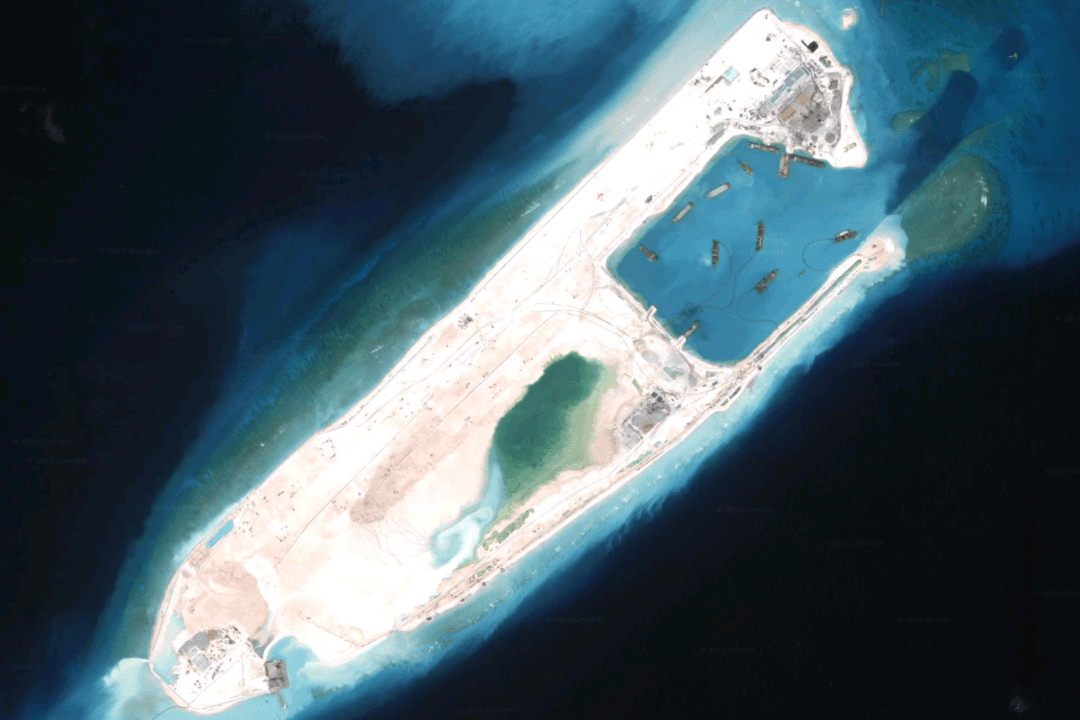This article was originally dispatched as part of Epoch Times’ China email newsletters. Subscribe to the newsletters by filling your email in the “China D-brief” box under this article.
China’s designs on the South China Sea appear to be going from the strange to the bizarre.
Since December 2013, the Chinese Communist Party (CCP) has created more than 2,900 acres of land in the Spratlys Islands in the South China Sea.
It does this by using ships to pump sand and mud from the ocean floor to build new islands. Then, it builds runways, military barracks, and surveillance equipment atop them.





